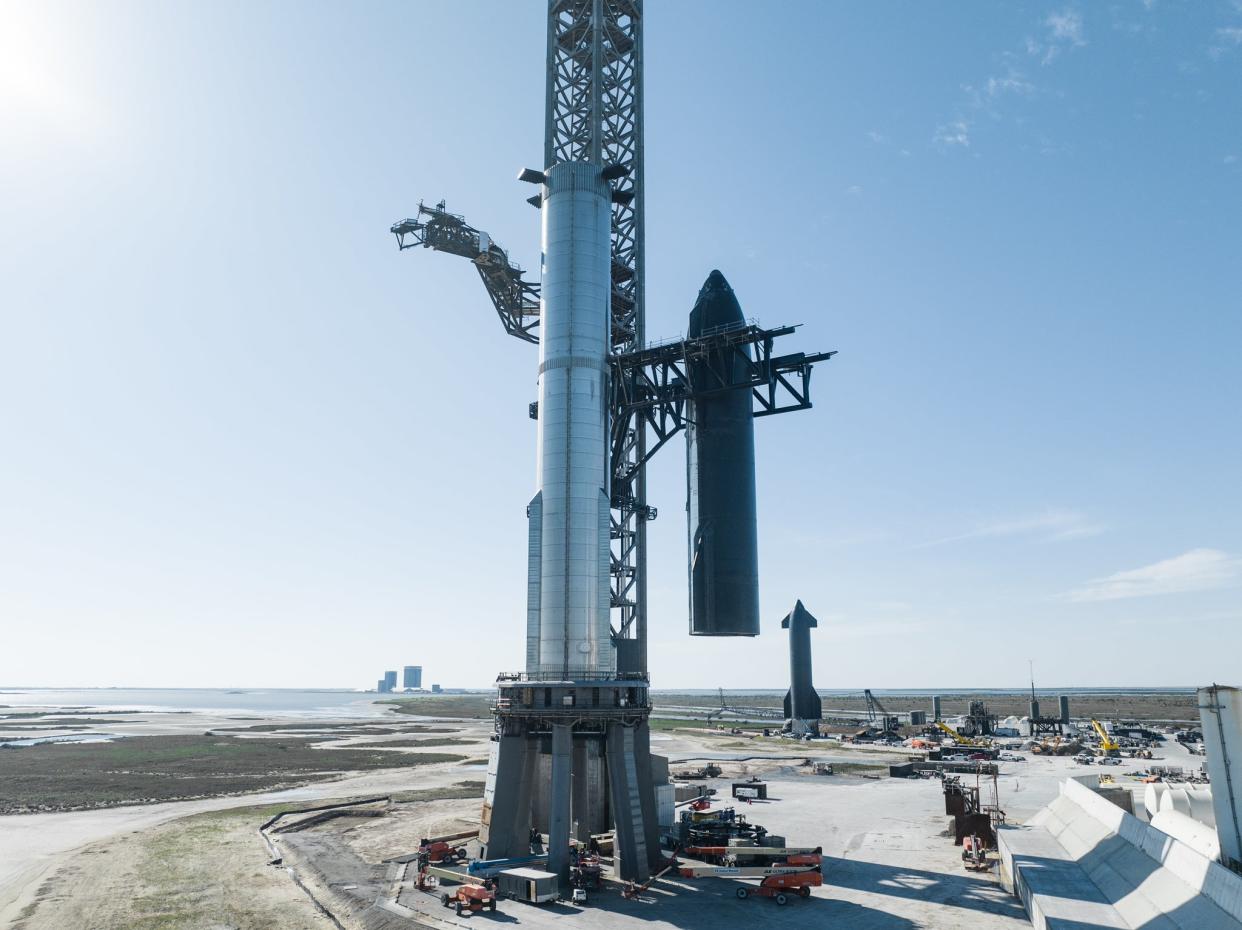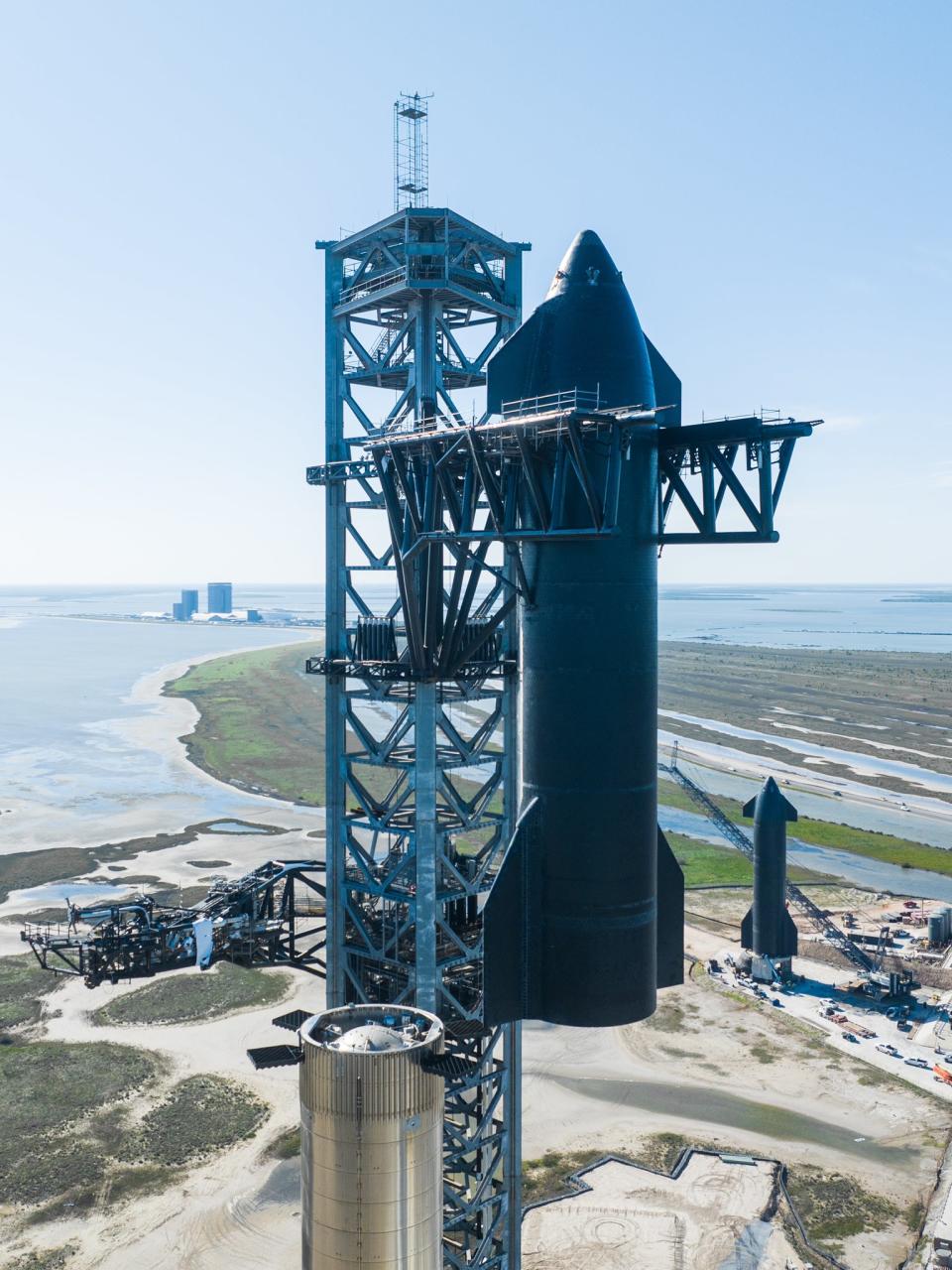SpaceX destacks Starship to prep for epic 33-engine test fire (photos)

SpaceX destacked its Starship Mars rocket on Wednesday (Jan. 25) to continue gearing up for the giant vehicle's first-ever orbital test flight.
Starship consists of two reusable elements, a huge first-stage booster called Super Heavy and a 165-foot-tall (50 meters) spacecraft known as Starship. Both are powered by SpaceX's next-generation Raptor engine — 33 for Super Heavy and six for Starship.
Earlier this month, SpaceX stacked the Ship 24 upper-stage prototype atop the Booster 7 Super Heavy variant at Starbase, the company's South Texas facility. And on Monday (Jan. 23), the company performed a landmark "wet dress rehearsal" with the duo, practicing many launch-day procedures — including loading the vehicles' tanks with more than 10 million pounds (4.5 million kilograms) of supercold liquid oxygen and liquid methane propellant.
Related: SpaceX's 1st orbital Starship looks supercool in these fueling test photos

Monday's test was a huge milestone for Ship 24 and Booster 7, which SpaceX is prepping for an orbital test flight that could lift off as soon as next month. But the wet dress rehearsal wasn't the final box to check, as Wednesday's activities showed.
"Launch and catch tower destacked Ship 24 from Booster 7 on the orbital pad today ahead of the Booster's static fire test," SpaceX tweeted on Wednesday, in a post that included two photos of the work.
The Starbase tower, which is about 469 feet (143 m) tall, will help returning Super Heavy boosters settle gently atop the orbital launch mount after liftoff, which explains the "and catch" part of its name.
Related stories:
— Starship and Super Heavy: SpaceX's Mars-colonizing transportation system
— Elon Musk says SpaceX could launch a Starship to the moon 'probably sooner' than 2024: report
— SpaceX launches Starship SN15 rocket and sticks the landing in high-altitude test flight
The coming static fire test — a common prelaunch trial in which engines are briefly ignited while a vehicle remains anchored to the ground — will engage all 33 of Booster 7's Raptors, SpaceX explained in a Tuesday tweet.
To date, the booster has test-fired a maximum of 14 of its engines simultaneously. Ship 24 ignited all six of its Raptors during a static fire in September 2022. (Static fires are done separately with each vehicle, in a destacked configuration, for safety's sake. So, if something goes wrong during a Booster 7 firing, Ship 24 won't be damaged.)
SpaceX hasn't said when the 33-engine test will take place, but don't expect the wait to be too long. SpaceX and its founder and CEO, Elon Musk, like to move fast, and there don't seem to be many hurdles to clear before lighting Booster 7 up.
Mike Wall is the author of "Out There" (Grand Central Publishing, 2018; illustrated by Karl Tate), a book about the search for alien life. Follow him on Twitter @michaeldwall. Follow us on Twitter @Spacedotcom or on Facebook.

